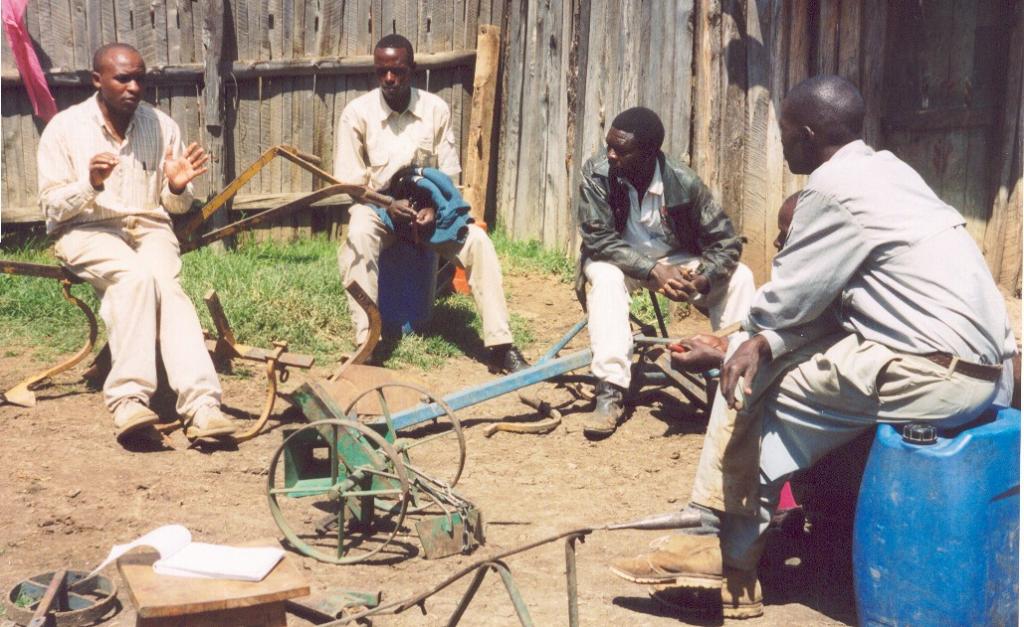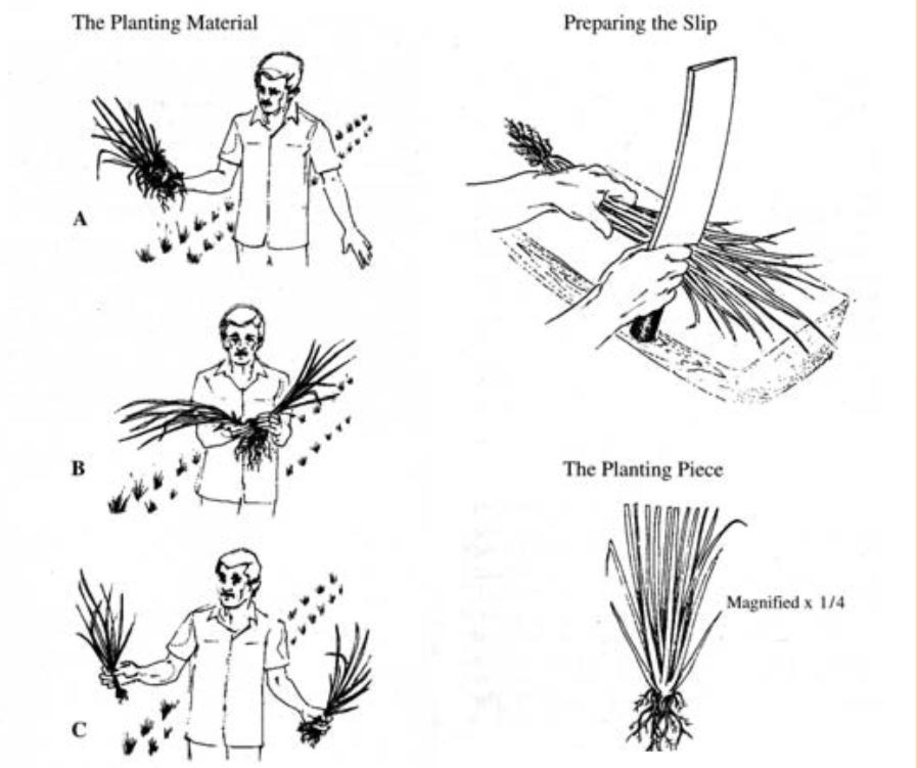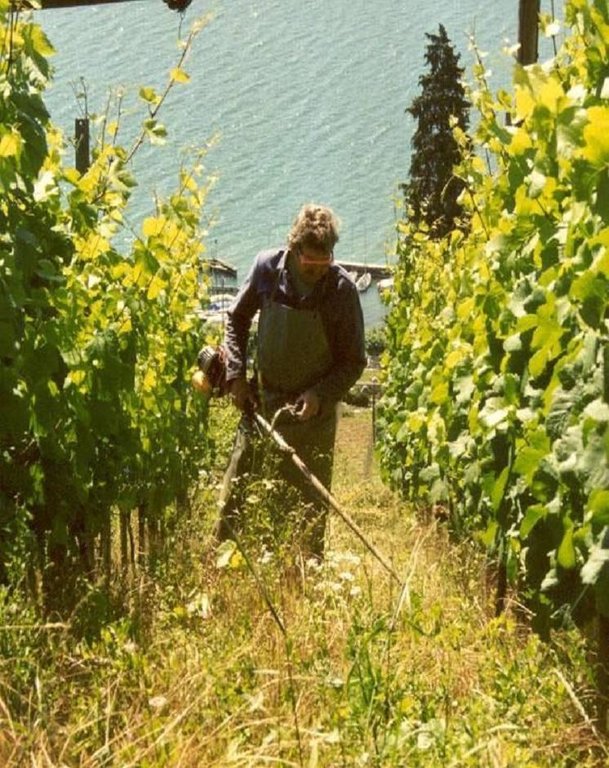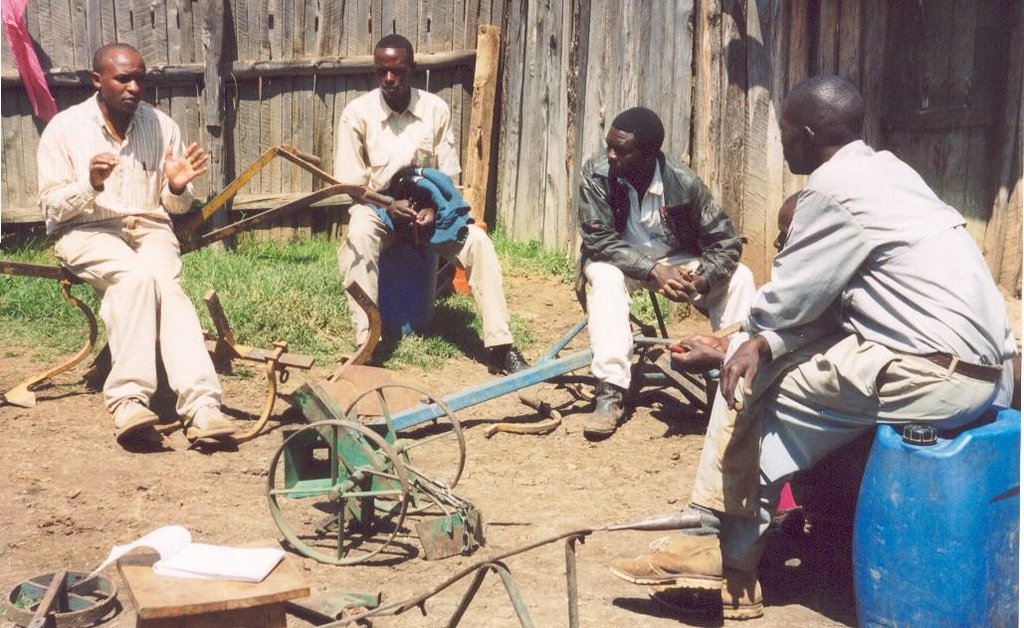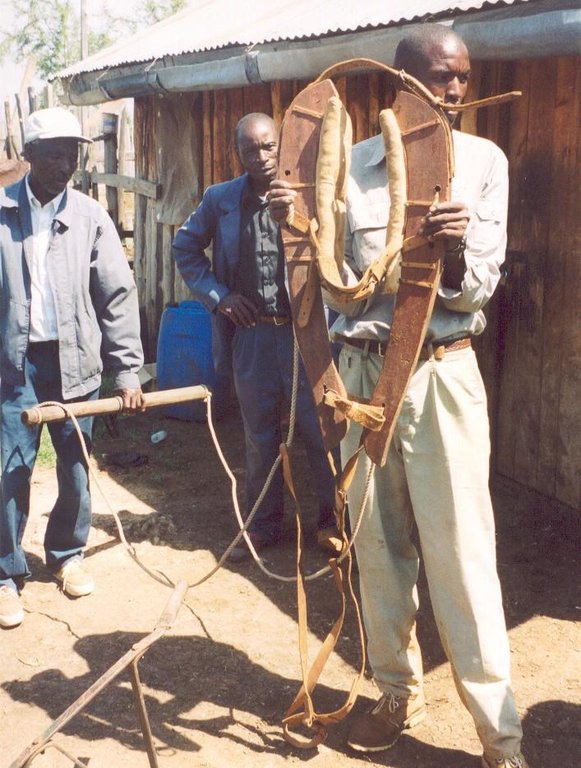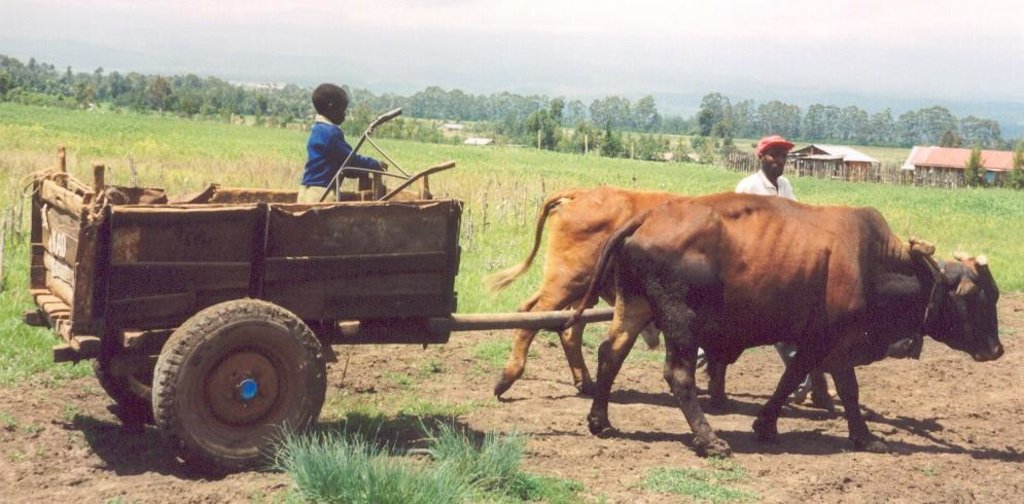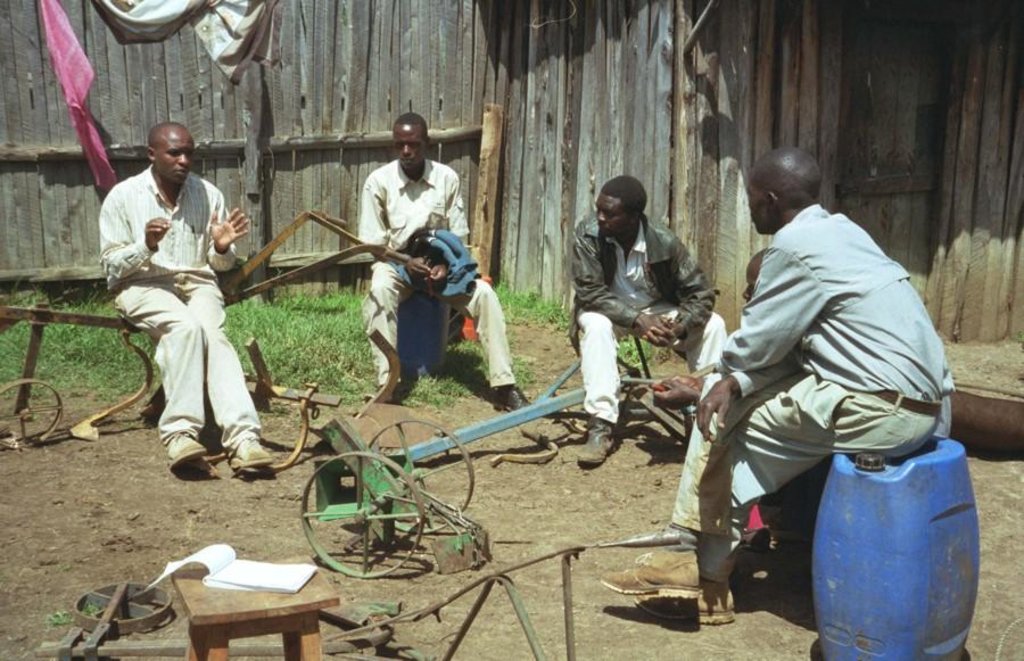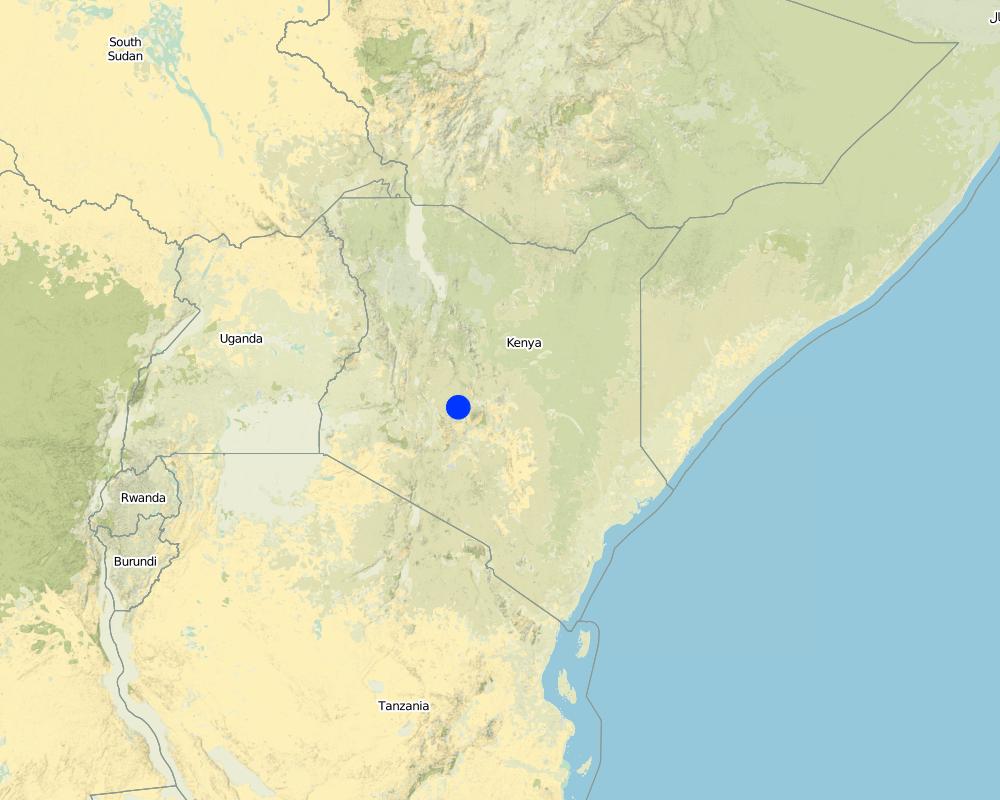Self-help groups [كينيا]
- تاريخ الإنشاء:
- تحديث:
- جامع المعلومات: Frederick I. Kihara
- المحرر: –
- المراجعون: Fabian Ottiger, Deborah Niggli
approaches_2357 - كينيا
عرض الأقسام
توسيع الكل طي الكل1. معلومات عامة
1.2 تفاصيل الاتصال بالأشخاص الرئيسيين لمصدر المعلومات والمؤسسات المعنية بتقييم وتوثيق النهج
متخصص في الإدارة المستدامة للأراضي:
Kiteme Boniface
+254-62 31328
b.kiteme@africaonline.co.
CETRAD - Centre for Training and Integrated Research in ASAL Development
PO Box 144, Nanyuki
كينيا
متخصص في الإدارة المستدامة للأراضي:
اسم المشروع الذي سهّل توثيق/تقييم النهج (إذا كان ذلك على صلة)
Book project: where the land is greener - Case Studies and Analysis of Soil and Water Conservation Initiatives Worldwide (where the land is greener)اسم المؤسسة (المؤسسات) التي سهلت توثيق/تقييم النهج (إذا كان ذلك على صلة)
Centre for Training and Integrated Research in ASAL Development (CETRAD) - كينيااسم المؤسسة (المؤسسات) التي سهلت توثيق/تقييم النهج (إذا كان ذلك على صلة)
University of Bern, Institute of Geography (GIUB) - سويسرااسم المؤسسة (المؤسسات) التي سهلت توثيق/تقييم النهج (إذا كان ذلك على صلة)
Agronomica - المملكة المتحدة1.3 الشروط المتعلقة باستخدام البيانات الموثقة من خلال WOCAT
يوافق جامع المعلومات والشخص (لاشخاص) الرئيسي لمصدر المعلومات على الشروط المتعلقة باستخدام البيانات الموثقة من خلال WOCAT:
نعم
1.4 المراجع الخاصة باستبيان(استبيانات) تقنيات الإدارة المستدامة للأراضي
2. وصف نهج الإدارة المستدامة للأراضي
2.1 وصف موجز للنهج
Small-scale farmers forming self-help groups to provide mutual support for adopting and promoting conservation agriculture.
2.2 وصف تفصيلي للنهج
وصف تفصيلي للنهج:
Aims / objectives: The self-help group approach described here is an initiative which grew from the local land users themselves. Farmers with common interests and goals came together, formed and registered groups and developed constitutions. Conservation agriculture groups started forming in 1997: within two years, five groups had been set up in the study area with over 150 members. The Ministry of Social Services facilitated the registration process. Groups have liased with technology promoters from the Ministry of Agriculture, KENDAT (Kenya Network for Draught Animal Technology), and research and development projects, to gain access to technical knowledge. These organisations have set up research and monitoring projects to assess the impact of conservation agriculture in this area. The groups receive more attention from local development partners than individuals would. The overall purpose behind the formation of the groups is to improve household food security and raise income. More specific objectives include: (1) mutual adoption of the technology, enabling group members to improve their farm operations and yields, and thereby; (2) creation of opportunities for additional income to help and support each other; (3) sharing knowledge, and conservation tillage equipment.
Role of stakeholders: Groups involve themselves in farmer-to-farmer training. They develop training modules which cover all aspects of conservation agriculture as well as practical training of the animals. Meetings are held once a month to plan group activities. The groups also solicit loans from local development partners for equipment, and they access training on technology from national institutions. Further collaboration with national institutes is planned to facilitate availability of droughttolerant crop varieties. The members of the self-help groups make various contributions including time, money, animals and some equipment - for joint group activities. Farmers with equipment contract their services to those without, but this is provided at a 20% discount to members.
Other important information: High adoption levels of conservation agriculture have been achieved through the self-help groups, due to the sharing of resources for technology development and mutual support. The interest in conservation agriculture and demand for equipment is high and growing. Group members are also diversifying their activities into, for example, agroforestry, water harvesting and bee-keeping.
2.3 صور عن النهج
2.5 البلد/المنطقة/المواقع التي تم تطبيق النهج فيها
البلد:
كينيا
المنطقة/الولاية/المحافظة:
Rift Valley
Map
×2.6 تواريخ بدء وإنهاء تنفيذ النهج
أشر إلى سنة البدء:
1997
2.7 نوع النهج
- قائم على مشروع/برنامج
2.8 الغايات/الأهداف الرئيسية للنهج
The Approach focused mainly on SLM with other activities (poverty alleviation, collective bargaining for procuring services, joint produce marketing, on-farm diversification, off-farm opportunities)
- increase household food security and raise income within the group. - provide mutual support and thereby develop collective bargaining power - an example is the ability to attract technology training from national organisations. - seek possible ways of acquiring equipment for all members of the group, through securing donor support or sponsorship. - all cropland to be under conservation tillage, with all members being fully trained in the technology and having the necessary equipment
The SLM Approach addressed the following problems: - insufficient individual resources to invest in/or learn about new technology. - underlying problems of (1) food security and (2) insecure water supply for rainfed crop production due to insufficient and poorly distributed rainfall
2.9 الظروف التي تمكن أو تعيق تنفيذ التقنية/التقنيات المطبقة بموجب النهج
المعايير والقيم الاجتماعية /الثقافية/ الدينية
- معيق
Use of draught animals seen as backward and non-progressive and gender-bias (technical operations and animal ownership traditionally male activities)
Treatment through the SLM Approach: The number of practising farmers providing mutual support able to neutralise such thinking and the group approach has created an avenue for women to participate
توفر/الوصول إلى الموارد والخدمات المالية
- معيق
Equipment is costly and generally cannot be afforded by many
Treatment through the SLM Approach: Ability to hire services from farmers in the group who have equipment
الإطار القانوني (حيازة الأراضي، وحقوق استخدام الأراضي والمياه)
- تمكين/تمكيني
The existing land ownership, land use rights / water rights moderately helped the approach implementation: Small land size can hinder adoption of the technology: the group approach can help to overcome this limitation. Those with small land parcels can access and afford the technology without having to keep animals.
المعرفة حول الإدارة المستدامة للأراضي، والوصول إلى الدعم الفني
- معيق
Technology wsa new and initially not well understood
Treatment through the SLM Approach: As an organised group, the members were able to attract technical training from experts (eg KENDAT, KCTI)which was paid by local development partners and also learnt from more experienced members of the group
غير ذلك
- معيق
Organisational. Group formation and group dynamics
Treatment through the SLM Approach: 2-3 enthusiastic, visionary individuals ensures success
3. المشاركة وأدوار الأطراف المعنية
3.1 أصحاب المصلحة المعنيون بالنهج وأدوارهم
- مستخدمو الأراضي المحليون/المجتمعات المحلية
Farmers, with common interests and goals, formed the group, registered and enacted their constitution. Government Ministry of Social Services facilitated the registration process. Group members liaised with technology promoters to access technical knowledge.
Working land users were work equally divided between men and women (The group has mixed membership but men tend to dominate field operations). Men traditionally own animals and have easier access to investment capital to purchase equipment than women. However, this is changing. In addition, in one group, the treasurer is a woman. The group also trains women how to use the technology. Within the first year, one woman had obtained the whole set of equipment plus a pair of oxen.
- الحكومة الوطنية (المخططون، صانعو القرار)
The group mobilises itself but with some support from Ministry of Agriculture extension workers.
3.2 انخراط مستخدمي الأراضي المحليين/المجتمعات المحلية في المراحل المختلفة للنهج
| انخراط مستخدمي الأراضي المحليين/المجتمعات المحلية | حدد من شارك وصف الأنشطة | |
|---|---|---|
| المبادرة/التحفيز | تفاعلي | public meetings; Creating awareness of technological development through open forums undertaken by agricultural extension staff. Meetings were held to plan organisational development . Farmers received information about an innovation that could be beneficial to them; they then mobilised themselves |
| التخطيط | تفاعلي | public meetings; The group plans its own agenda in meetings |
| التنفيذ | تفاعلي | responsibility for major steps; The group is responsible for procuring equipment and inputs; they train their animals, while training on technology is provided by specialists |
| الرصد/التقييم | التعبئة الذاتية | Mainly: measurements/observations; partly: public meetings; Group members keep yield records which are reported and discussed at meetings (without participation of specialists) |
| Research | تفاعلي | on-farm; Farmers themselves compare cultivation methods; in addition, some research plots by KENDAT, the extension services (MoA) and students have also been set up in farmers' fields. |
3.4 اتخاذ القرار بشأن اختيار تقنية/تقنيات الإدارة المستدامة للأراضي
حدد من الذي قرر اختيار التقنية/التقنيات التي سيتم تنفيذها:
- متخصصون في الإدارة المستدامة للأراضي بشكل أساسي، بعد التشاور مع مستخدمي الأراضي
اشرح:
Supported by the National Soil and Water Conservation programme under the Ministry of Agriculture (MoA). SWC specialists created awareness of the technology in the local community, with land users independently deciding to adopt.
Decisions on the method of implementing the SLM Technology were made by by land users* alone (self-initiative / bottom-up). Farmers adopted the technology with modifications so that they could use their animals for draught power. However, there was a degree of follow-up by SWC specialists.
4. الدعم الفني وبناء القدرات وإدارة المعرفة
4.1 بناء القدرات/التدريب
هل تم تقديم التدريب لمستخدمي الأراضي / الأطراف المعنيين الآخرين؟:
نعم
حدد من تم تدريبه:
- مستخدمو الأراضي
- group members, SWC specialists (2), extensionists/trainers (3)
شكل التدريب:
- من مزارع إلى مزارع
- مناطق العرض
- دورات
المواضيع المغطاة:
The main element is farmer-to-farmer training within the group on use of appropriate equipment, equipment maintenance, animal health and care. Members attend training courses organised by extension staff and NGOs including KENDAT and Operation Comfort (from Central Kenya). Apart from courses, there are demonstration areas on research sites and group plots, as well as farm visits amongst and betwee
4.2 خدمة استشارية
هل يملك مستخدمو الأراضي وصولا إلى خدمة استشارية؟:
نعم
حدد ما إذا كانت الخدمة الاستشارية متوفرة:
- في حقول مستخدمي الأراضي
وصف/تعليقات:
Name of method used for advisory service: Innovative farmers support; Key elements: Identify innovative farmers in an area, Supporting them to come together, Providing new technology training; 1) Advisory service was carried out through: Other: governmental, non-governmental and group members 2) Advisory service was carried out through: Other: governmental, non-governmental and group members; Extension staff: mainly government employees 3) Target groups for extension: land users; Activities: Training on use of appropriate equipment, equipment maintenance, animal health and care etc
Advisory service is inadequate to ensure the continuation of land conservation activities; The performance of the technology is very impressive and rapidly adopted by group members. However this is dependent on the group ie 2-3 enthusiastic and innovative members are required for a successful group. Further expansion is limited by weak extension support.
Extension is carried out through governmental and non-governmental specialists, equipment sales person and well-informed group members. This is facilitated by the way groups formed and tapped into the extension advice, and also shared information amongst themselves.Extension is carried out through governmental and non-governmental specialists, equipment sales person and well-informed group members. This is facilitated by the way groups formed and tapped into the extension advice, and also shared information amongst themselves.
4.3 تعزيز المؤسسات (التطوير التنظيمي)
هل تم إنشاء أو تعزيز مؤسسات من خلال هذا النهج؟:
- نعم، باعتدال
حدد المستوى (المستويات) التي تم فيها تعزيز أو إنشاء المؤسسات:
- محلي
حدد نوع الدعم:
- بناء القدرات/التدريب
4.4 الرصد والتقييم
هل يشكل الرصد والتقييم جزءا من النهج؟:
نعم
التعليقات:
bio-physical aspects were ad hoc monitored. Indicators: work undertaken
technical aspects were ad hoc monitored. Indicators: rate of adoption, attitudinal changes
socio-cultural aspects were regular monitored through observations; indicators: yield/area with the data from research station being occasionally analysed and results shared out
economic / production aspects were ad hoc monitored through measurements; indicators: acreage
area treated aspects were ad hoc monitored through measurements; indicators: as membership feedback af meetings
no. of land users involved aspects were ad hoc monitored through observations; indicators: None
management of Approach aspects were regular monitored through observations; indicators: None
There were few changes in the Approach as a result of monitoring and evaluation: The success of the technology - conservation agriculture - has strengthened group collective bargaining power to attract further extension input support, regular visitation and advice on best agronomic practices. There has also been a move to encourage women's uptake of the technology.
4.5 البحوث
هل كانت البحوث جزءًا من النهج؟:
نعم
حدد المواضيع:
- تكنولوجيا
أعط تفاصيل إضافية وأشر إلى من قام بالبحوث:
On-farm research is carried out by KENDAT, who conduct field trials to investigate the best technological practices. The data is collected in collaboration with participating farmers. The field research activities have included long-term experiments, demonstration sites and field days.
Research was carried out on-farm
5. التمويل والدعم المادي الخارجي
5.1 الميزانية السنوية لمكون الإدارة المستدامة للأراضي في النهج المذكور
إذا لم تكن الميزانية السنوية الدقيقة معروفة، قم بالإشارة إلى نطاقها:
- < 2000
التعليقات (على سبيل المثال المصادر الرئيسية للتمويل/الجهات المانحة الرئيسية):
Approach costs were met by the following donors: local community / land user(s) (Self-help group members): 100.0%
5.2 الدعم المالي/المادي المقدم لمستخدمي الأراضي
هل حصل مستخدمو الأراضي على دعم مالي/ مادي لتنفيذ التقنية/ التقنيات؟:
نعم
إذا كانت الإجابة بنعم، حدد نوع (أنواع) الدعم والشروط والمزودين:
Two year loans are available from international development partners (SNV).
5.3 إعانات لمدخلات محددة (بما في ذلك العمالة)
- معدات
| حدد المدخلات التي تم دعمها | إلى أي مدى | حدد الإعانات |
|---|---|---|
| الآلات | ممول جزئيا | 2 year loan possible |
- غير ذلك
| غير ذلك(حدد) | إلى أي مدى | حدد الإعانات |
|---|---|---|
| Technical training and back up | ممول بالكامل |
إذا كان العمل من قبل مستخدمي الأراضي مدخلاً جوهريًا، فهل كان:
- تطوعي
5.4 الائتمان
هل تم توفير ائتمان في إطار نهج أنشطة الإدارة المستدامة للأراضي؟:
نعم
حدد الشروط (معدل الفائدة، فترة السداد، الخ.):
Two year loans are available from international development partners (SNV). Generally 50% is repaid in the 1st year, 50% in the 2nd year. These loans are used to purchase equipment, with group members acting as guarantors for each other.
حدد مقدمي الائتمان:
The community contributed a considerable percentage (through labour and time). KENDAT (NGO,Kenya) mainly provided training and extension, whereas SNV (NGO, Netherlands) gave credits. Details of the breakdown are not available.
6. تحليل الأثر والتصريحات الختامية
6.1 آثار النهج
هل ساعد النهج مستخدمي الأراضي على تنفيذ وصيانة تقنيات الإدارة المستدامة للأراضي؟:
- لا
- نعم، قليلا
- نعم، باعتدال
- نعم، إلى حد كبير
These improvements include in situ moisture conservation (reduced evaporation and runoff), water harvesting, increased soil fertility and reduced soil loss.
Did other land users / projects adopt the Approach?
- لا
- نعم، قليلا
- نعم، باعتدال
- نعم، إلى حد كبير
Many self-help groups have arisen and are addressing their particular problems related to conservation agriculture.
6.2 المحفز الرئيسي لقيام مستخدمي الأراضي بتنفيذ الإدارة المستدامة للأراضي
- الحد من مخاطر الكوارث
6.3 استدامة أنشطة النهج
هل يمكن لمستخدمي الأراضي المحافظة على استدامة ما تم تنفيذه من خلال النهج (بدون دعم خارجي)؟:
- نعم
إذا كانت الإجابة بنعم، صف كيف:
Land users can continue group formation and the associated activities without external support because they can seek technical support for the specific activities.
6.4 نقاط قوة/مزايا النهج
| نقاط القوة/ المزايا/ الفرص من وجهة نظر مستخدمي الأراضي |
|---|
| Collective bargaining power is achieved through good accounting and positive group financial status. This tends to attract donor support for further collective activities. |
| Sharing of technological knowledge, as well as equipment, within the groups and exchange between groups. |
| نقاط القوة/ المزايا/ الفرص من وجهة نظر جامع المعلومات أو غيره من الاشخاص الرئيسيين لمصدر المعلومات |
|---|
| Easier for extension services to target a group of like-minded farmers than individuals (How to sustain/ enhance this strength: Encourage further self-help group formation) |
| Self-help groups are self-sustaining (How to sustain/ enhance this strength: Ensure continual success by providing refresher courses on technology by extensionists, introduce innovations to keep group interest alive.) |
6.5 نقاط الضعف/ العيوب في المنهج وطرق التغلب عليها
| نقاط الضعف/ المساوىء/ المخاطر من وجهة نظر مستخدم الأراضي | كيف يمكن التغلب عليها؟ |
|---|---|
| Greater time and energy input from the innovative farmers, because they pass on their knowledge without direct reward | Farmers gain confidence and status in the group or area as leaders. |
| نقاط الضعف/ المساوىء/ المخاطر من وجهة نظر جامع المعلومات أو غيره من الاشخاص الرئيسيين لمصدر المعلومات | كيف يمكن التغلب عليها؟ |
|---|---|
| Self-help groups are not optimal where some individuals are relatively poor and cannot afford contributions | modify arrangements to permit higher contributions by more financially able members who then get a greater share of the profits. |
7. المراجع والروابط
7.2 المراجع للمنشورات المتاحة
العنوان، المؤلف، السنة، النظام القياسي الدولي لترقيم الكتب ISBN:
Liniger HP and Thomas DB (1998) GRASS - Ground Cover for Restoration of Arid and Semi-arid Soils. Advances in
Ngigi SN (2003) Rainwater Harvesting for improved land productivity in the Greater Horn of Africa. Kenya
Mutunga CN (1995) The influence of vegetation cover on runoff and soil loss - a study in Mukogodo, Laikipia district Kenya. MSc
Kihara FI (1999) An investigation into the soil loss problem in the Upper Ewaso Ng'iro basin, Kenya. MSc. Thesis. University of
الروابط والوحدات المواضيعية
توسيع الكل طي الكلالروابط
لا يوجد روابط
الوحدات المواضيعية
لا يوجد وحدات مواضيعية


